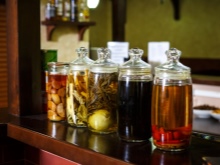Features of the Russian bath
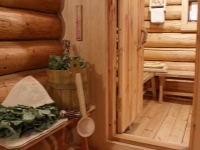
The Russian bathhouse is a significant part of the culture of the people, as it has its own deep traditions that go back to the distant centuries. As in those early days, and now the concept of "Russian bath" includes not only hygienic procedures, but a whole range of measures of health, relaxation, friendly and even business communication.
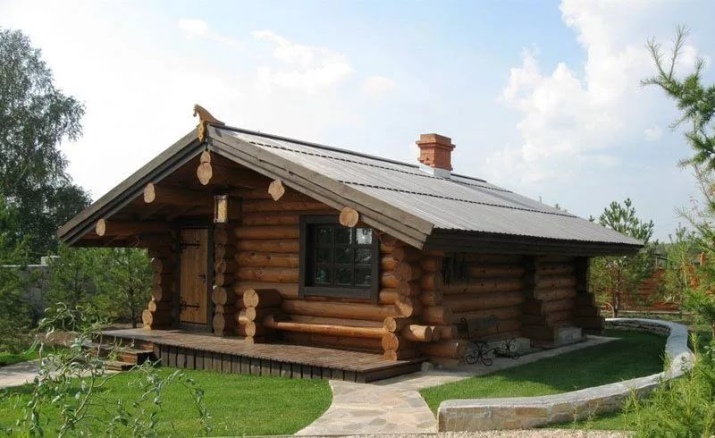

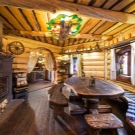
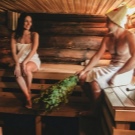

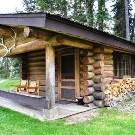
Peculiarities of
Baths at all times were a widespread phenomenon among the Slavic tribes. And regular maintenance of physical cleanliness was not a privilege of the rich classes, it was used by both nobles and simple peasants.

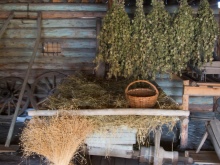
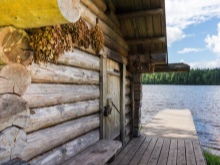
From its very inception, the Russian bathhouse was a necessary household building that served many functions, and it was built practically in every household. Due to the need to concentrate high temperature, the bathhouse area was as small as the number of people living in the house would allow.
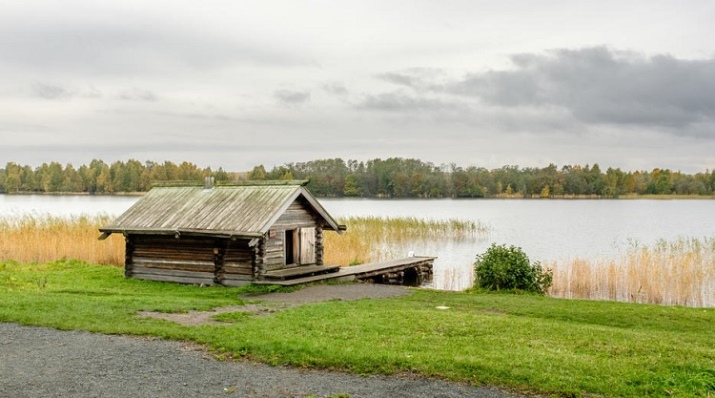

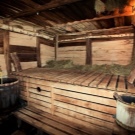
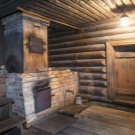
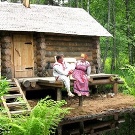
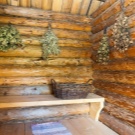
A proper bathhouse became at the same time a home therapy room, a maternity hospital, a place for family ritual ablutions and frequent washing. This universal use of the back room was due to the high sterility inside, as few germs could withstand the high temperature, which with the steam penetrated into all the cracks. The smoke with high phenol content in the black bath also disinfected it from the inside.

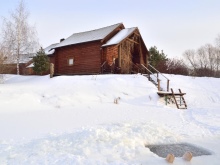
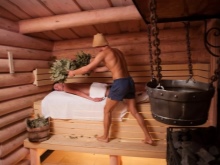
Structures for steam rooms are built most often from coniferous trees, which give the natural vapors of wood inside the heated room and fill it with a healthy atmosphere. The best baths have always been considered to be those lined with larch boards inside.
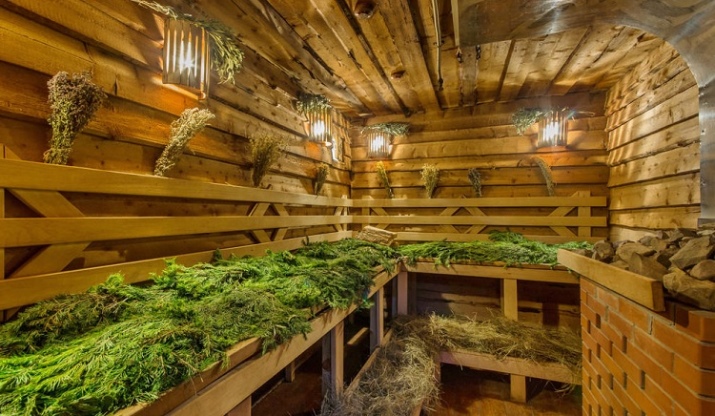
All this destroys viruses and germs of colds, serves as a good measure to maintain the health of the heart muscle, musculoskeletal system and the prevention of many infectious diseases.
Another obligatory attribute of the Russian bathing culture are brooms made of the branches of medicinal plants, which are used for health massage. The concept of contrast showers also has its origins in ancient traditions.
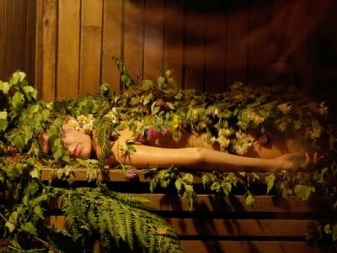
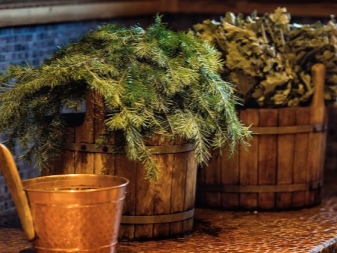
History of Appearance
Ancient baths in descriptions appear to have been a small freestanding structure made of logs. It usually consisted of an anteroom in which clothes were left. This room also served as protection from the outside frosty weather. Inside, there was a stove for heating water for washing and getting hot coals, which were splashed with water to produce hot steam reaching very high temperatures.
In Russia there were beliefs that in every bath there lived a spirit guarding it from penetration of strange and dangerous entities. He was represented as an undressed short old man covered with sticky bath leaves from many brooms.

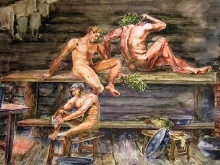

The old Russian rites reflected a respectful attitude to the guardian of the bathing spirit. It was necessary to ask him and from time to time to treat him with bread and salt, so that the sacred place would remain clean. Such rites speak of their very ancient origin, when people considered the forces of nature and the elements to be their deities. In the bathhouse, they are represented in a combination of fire, water, smoke and the stone from which the hearth is built.
It was in such a room that man could be born and die. There he received regular health and preventive treatments throughout his life. It was in this room that ancient healers secluded themselves with sick people and put the sick on their feet in the village.

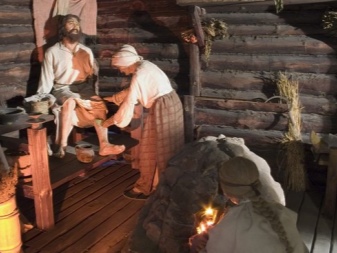
The first annalistic references to Slavic bathing culture date back to the years of the tenth century. But bathing traditions of the ancient Slavic tribes appeared much earlier. So, Byzantine writer Procopius of Caesarea in the 500s mentions regular ablutions adopted by the Slavic tribes.
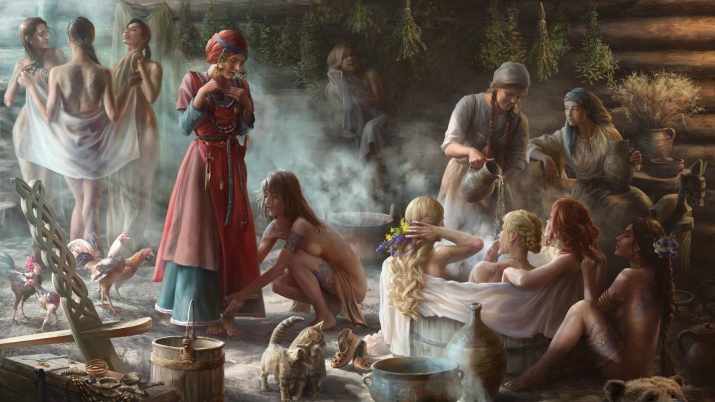
With the advent of Christianity, ablutions before church ceremonies such as baptism, marriage, and communion took on a new symbolic meaning. Foreigners were often surprised that the whole family went to the baths and were not ashamed to undress there. Also, the bathhouse often became a place for friends, neighbors or hosts to socialize with guests.

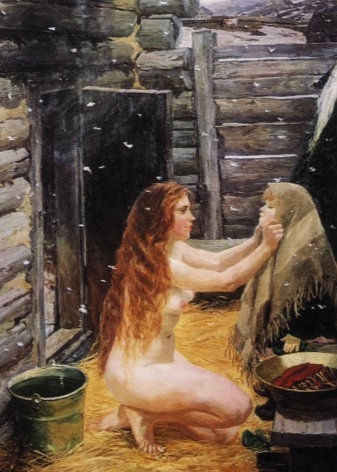
With the emergence of a large number of cities and centralization of power bathhouses construction was regulated, and since 1649 the construction of additional rooms for hygienic purposes was allowed by a special decree. Every family with enough land at their disposal could build their own bathhouse. The law prescribed the construction of bathing buildings away from dwellings, on vegetable gardens and vacant lots, in order to minimize the possibility of fires.
Thus, almost every house in the Old Russian state was provided with its own bathhouse, in which it was customary for everyone to wash on Saturdays. Even public institutions did not work on this day, as bathing day was considered mandatory for all estates.
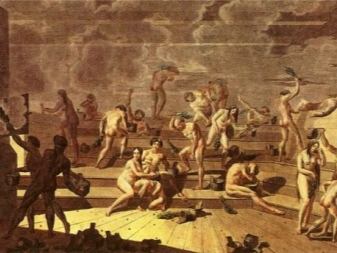
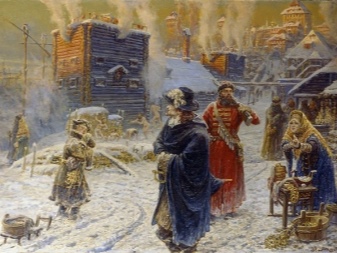
Arrangement
A real Russian bath is a whole complex consisting of rooms, each of which has its own purpose. The minimum set includes a pre-bath or hallway, a steam room for warming up and a shower room for ablutions. Before laying the bath on a private plot it is necessary to decide on its size, the internal layout of the functional departments and the appearance of the facades.
If a large steam room is provided, its heating will take too much fuel and it will be difficult to maintain a balance between humidity and high temperature. A room that is too small will be cramped and stuffy.

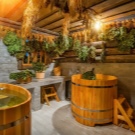
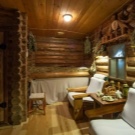
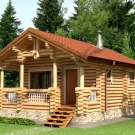
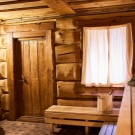
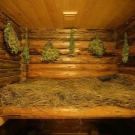
Do not have a bathhouse layout in which there is no anteroom at all and the stove is heated directly from the wash-room or steam room. A sauna with the wrong arrangement of the main component rooms will not be beneficial, and can even become dangerous if carbon dioxide is released inside the structure.
In the steam room there should always be at least two people who can monitor each other. Therefore, the location of benches and shelves on 2 or 3 levels is calculated in such a way as to comfortably accommodate the expected number of people.
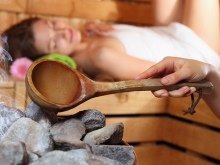
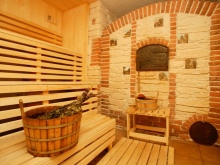
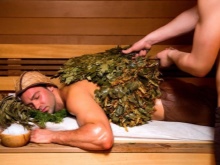
The anteroom may be of any size the owner wants to build it. It can be both a locker room, fireplace and a place to rest the whole family or guests. When calculating for the family the optimal area is 1 square meter per person.
This takes into account the place for changing clothes, hangers for storing clothes and bath accessories. A long bench for dressing or resting can be useful, under the seat of which you can store logs. It is permissible to attach the sauna to the summer kitchen, which will replace the pre-bath.
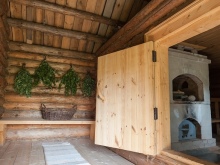
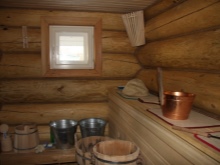
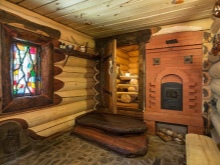
The washing room is usually designed to accommodate two people and the minimum area of the shower room should be 1.8x2 meters. In it you can cool down after the steam room with the bath, bucket, shower, and in especially expensive buildings there is a small pool.
This type of baths is suitable only for amateurs, because only very healthy people can withstand the special conditions.
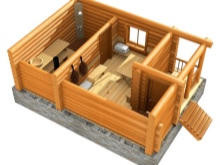
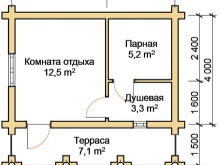
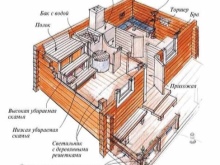
Types
Despite the simplicity of such an auxiliary construction as a bath. to erect it is not at all easy. Its structure over time settled and became the most consistent with the tasks of health promotion and purification is not only the surface of the body, but also the whole body. In a peculiar culture of bathhouse construction, a division into several types has appeared by now.
- A water bath is arranged following the example of Turkish traditions, where the main focus is on a large volume of steam.
- Wet, classic Russian, where the temperature is kept at 50 to 90 degrees and the humidity reaches 100%.
- Dry Finnish steam room, where the high temperature, about 120 degrees, dries the water steam and the humidity inside drops to 25%.
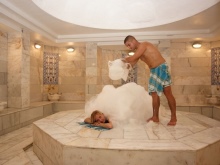
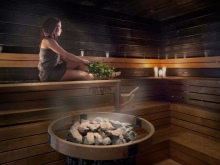
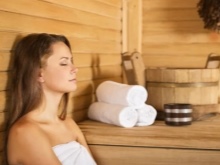
Materials for building
The main material for the construction of the Russian bath has always been wood. For successful and long-lasting functioning, choose strong varieties of wood with a small percentage of thermal conductivity. These include: oak, maple, fir, lime. Especially meet the requirements for the preservation of internal heat in the premises of such species of wood as spruce, cedar and larch. They are most often used to build baths in the north. Both solid round logs and wooden planks are used.
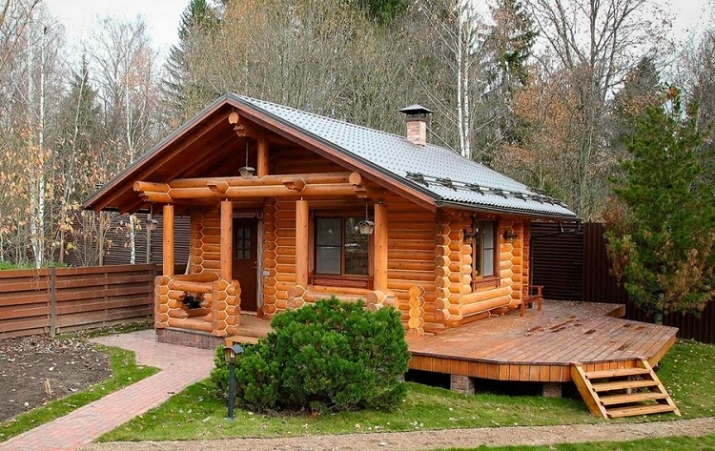
Alder and linden are still the most valuable materials for the inner lining of the bathsAlder and linden are still the most valuable materials for the inside of a bathhouse, as their aroma has a healing effect on the person, constantly evaporating inside at high temperatures. Birch is represented in the bath mainly in the form of brooms for massage, because its wood is prone to cracking.
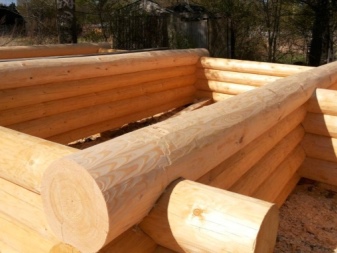
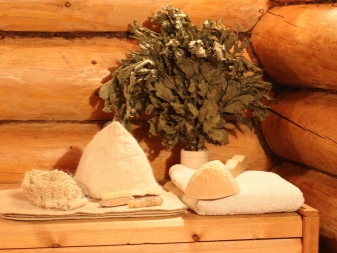
Stones or bricks stacked on clay are used for the stove. In the structure of a wooden log cabin cracks used to be caulked with a peculiar mixture of resin of coniferous trees with forest moss. Bathing utensils, such as linden tubs, alder benches and oak firewood, were also made of wood.
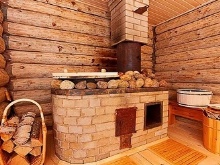
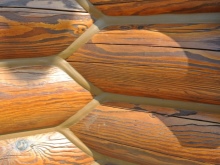
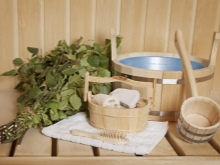
Nowadays solid wood is a rather expensive material, and its purchase is not affordable to everyone. You can build baths from cheaper artificial materials, such as foam blocks. They retain heat well and are resistant to fire. The foundation for the walls of any material is made of monolithic reinforced concrete. The roof can be covered with tile or roll roofing felt.
Inside, in addition to natural cladding for the steam room, the walls and internal partitions of brick, natural and artificial stone, as well as ceramic tiles or porcelain tiles are used.
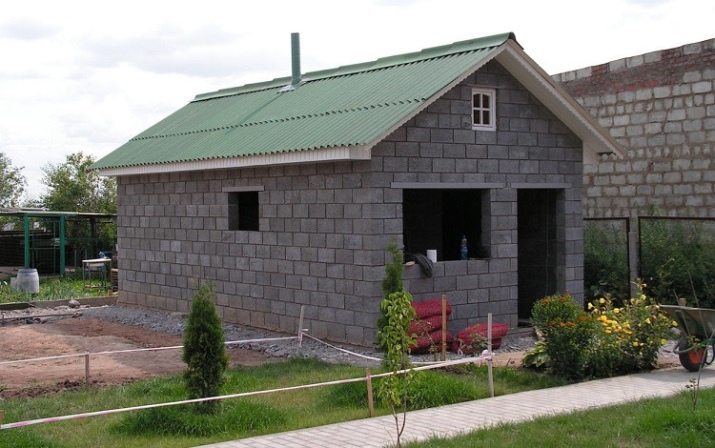
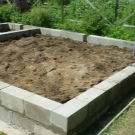
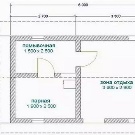
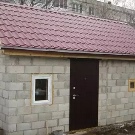
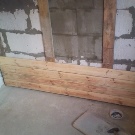
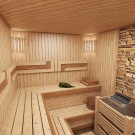
Examples of projects
- Modern baths inside are equipped with plumbing and sewage, thanks to which there are showers next to the door of the steam room. They are entered immediately at the exit of the steam room and washed. In a small-sized bath the washing room is combined with the steam room. To decorate the beautiful interior, treated solid wood planks are used. The floor is often finished with tiles, and the rest room looks the most beautiful and decorated with imagination.
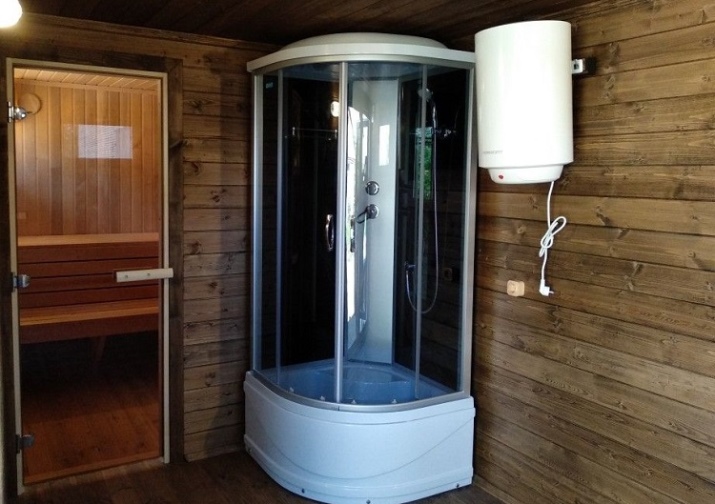
- An ordinary small rustic bathhouse on the plot can occupy a space of 2.3X3 meters. Here the sink becomes part of the steam room, and the stove is partly in the anteroom, where the firebox is located, and the other part goes into the steam room. The interior room can be maximized by placing shelves and benches in two or three rows along two walls not adjacent to the door. Finishing a classic log cabin from the outside is practically not required, except for the treatment of wood with special compounds to increase the service life.
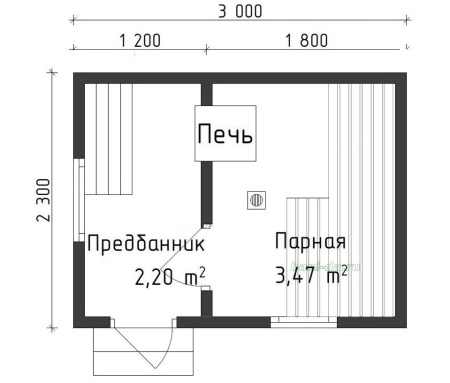
- Recently, baths with a swimming pool have become popular. Water bowls are available for sale and the choice of their parameters is quite large. There are ready-made pools, a depth of 1 meter and size 2X2 meters. The room with a swimming pool is finished with wood, plaster with a waterproof coating, the floor should be made of material that does not slip from the water. If space and funds do not allow, the same cooling effect after the steam room can be obtained in a font with water of room temperature.
For those owners, who often meet their guests in the building of a large bathhouse, a billiard room, a hookah room and a room for rest can be also equipped there. At the bath, it is convenient to place a shed with a barbecue grill or stove, with a beautifully decorated, real nature recreation corner.

How to heat it?
Proper heating of the bath for maximum comfort is not as simple as it seems at first glance. It is necessary to know not only the order of operations, but also the quality of the fuel that is used in this.

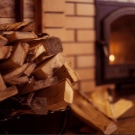
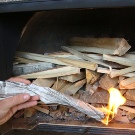
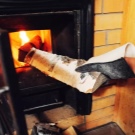
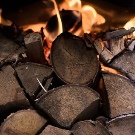
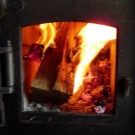
Choice of firewood
Firewood is the most suitable for a real sauna. This type of fuel is the most effective and safe. Most often used for this purpose are those species of wood that grow nearby. However, the leader in combustion heat output is the hornbeam, and the most unheated species is the poplar. Birch or alder logs are notable for the useful aroma they emit when they burn.
Conifers burn quickly, produce little heat, but quickly clog up the chimney with their resinous substances. Recently, such material for the furnace as pellets are widely used, which are made from wood and chipboard waste from the joinery industry and give a high temperature.
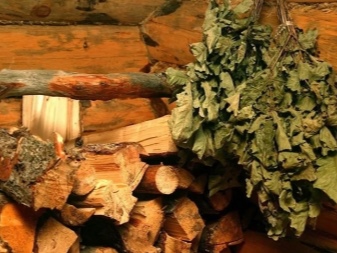

Ignition
The kindling begins immediately after cleaning and preparing the sauna room. The firebox and the ash drawer must also be cleaned of ashes. You can check the draught by holding a lighted match near the firebox. Chips for kindling can be replaced by dry bark, birch bark being the most valuable.
On the bottom is placed crumpled paper, then wood chips and bark, and on top a few dry logs, so that there is a semblance of a well. When the ignition burns for 15-20 minutes, you can fill a full firebox with wood, about 2/3 of the height.
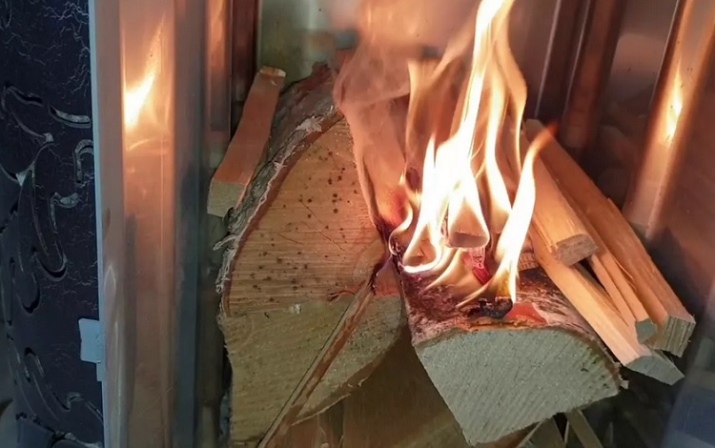
Maintaining the temperature
The quality of heating up the steam room depends directly on the time of year. In summer it can take up to 3 hours of continuous burning for a good kindling and heating of the sauna, and in winter it can take 5 to 6 hours, depending on the strength of the external cold.
The threshold of the doorway to the steam room has always been made high, so that the steam lasts longer inside.
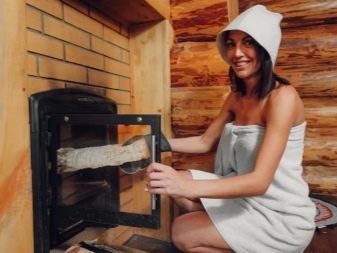
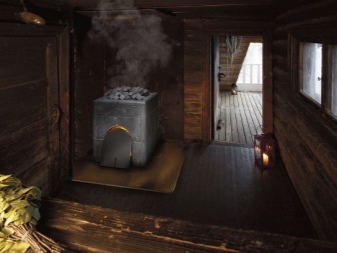
How to use the steam room?
The order of procedures in the steam room is determined by its arrangement. If the showers are in front of the steam room, you must first wash in them before entering the main room. In the anteroom you can undress, rest and massage. Inside the steam room at first there is a relatively average temperature, which can go up to 90-120 degrees, depending on the type of bath and the desire of the bathers.
The average level of humidity contributes to quick warming up of the room when the next batch of steam is received. In a Roman or Turkish bath a person can stay for several hours because of the low humidity, but in a Russian bath the temperature is off the scale. It is recommended to stay inside the heated steam room for maximum 20 minutes as an adult without any danger to your health, but a beginner should get used to it gradually, making several visits of 5-10 minutes each.
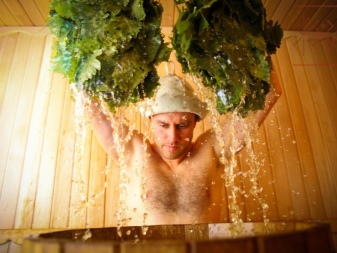
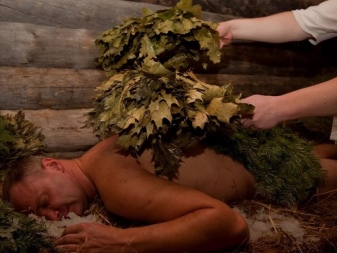
With the help of a bath broom is made revitalizing massage, treating pain in the joints. Skin after treatment with a whisk and a few treatments in the steam room with a contrast shower after it becomes clean, silky to the touch and more elastic. Intense sweating helps to remove many harmful and toxic substances from the body, which makes it easier for the kidneys.
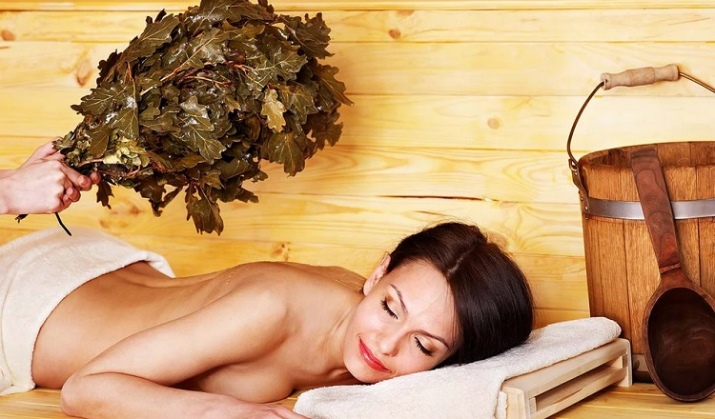
In healthy middle-aged people, alternating exposure to contrasting temperatures has a good effect on the respiratory and cardiovascular systems. It is harmful to visit the hot steam room for people with heart disease and tendency to hypertension.

Traditions and customs
For Russian people, the national bath was practically a sacred phenomenon, with the help of which you can cleanse not only the body but also the spirit. There was a whole complex of activities in the bathhouse, thanks to which people bathed, hardened in winter, received a massage, warmed up from colds and infections, healed the whole organism. To obtain the healing steam heated stones were poured not just with water, but kvass, beer or infusion of medicinal herbs.
Visiting a bathhouse in Russia since ancient times was elevated to a real cult of purity and health. So it is now, when special respect and affection for guests is shown by inviting them even for business negotiations to a good Russian bathhouse with a steam room, a cold pool and a room for feasts.
Stories and interesting facts about the baths are widely reflected in the works of Russian folklore. People at all times went to the bath not only for cleanliness, but also for the prevention of diseases, treatment or just for pleasure.


